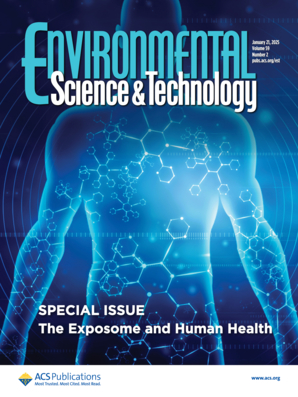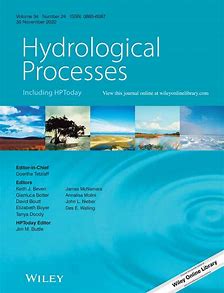(Dept. 1) Ecohydrology and Biogeochemistry
The interactions within and between green water (in terrestrial systems) and blue water (lakes, rivers, and subsurface aquifers) affect in complex ways the habitats for organisms and the reactive transport of abiotic components. Aquatic and terrestrial systems are coupled at multiple spatio-temporal scales. The overall goal of the Department of Ecohydrology and Biogeochemistry is to understand the ecohydrological and biogeochemical processes of these connected land- and waterscapes in natural, rural and urban environments. Therefore, our research projects focus on the following core topics:
- Interactions of landscape-freshwater ecosystems
- Physical and biogeochemical drivers under global change
- Water security in disturbed and urban systems
In our research, we integrate different modelling approaches with data collected in field studies, in large-scale manipulation studies, by long-term monitoring and in laboratory experiments. We study ecohydrological and biogeochemical processes using a variety of tracer techniques, particularly stable isotopes, and by measuring naturally dissolved solutes, conservative geogenic ions, trace organic matter, and nutrients. In doing so, we combine basic research with application aspects and aim to record and model the effects of climate and land use changes. With its laboratory infrastructure and expertise in the fields of inorganic and organic analysis as well as isotope measurement, the department performs a central function for the entire institute. To achieve our research goal, we combine our professional expertise from the research disciplines of hydrology, geochemistry, aquatic physics, ecology, environmental engineering, and geography.

Landscape Ecohydrology, Research group of Dörthe Tetzlaff, Graphic: Dörthe Tetzlaff / IGB

Ground Water-Surface Water Interactions, Research group of Jörg Lewandowski, Graphic: Jörg Lewandowski / IGB

Physical Limnology, Research group of Georgiy Kirillin, Graphic: Georgiy Kirillin / IGB

Organic Contaminants, Research group of Stephanie Spahr, Graphic: Stephanie Spahr / IGB

Ecohydraulics, Research group of Alexander Sukhodolov, Graphic: Alexander Sukhodolov / IGB

Nutrient Cycles and Chemical Analytics, Research group of Tobias Goldhammer, Graphic: Tobias Goldhammer / IGB

River System Modelling, Research group of Markus Venohr, Graphic: Markus Venohr / IGB

Biogeochemical Processes in Sediments and Lake Management, Research group of Michael Hupfer, Graphic: Michael Hupfer / IGB
Research groups
Department members
Selected publications
Biogenic polyphosphate as relevant regulator of seasonal phosphate storage in surface sediments of stratified eutrophic lakes
Using nuclear magnetic resonance spectroscopy, the authors studied the polyphosphate seasonality in the topmost sediment layer of three stratified lakes with prolonged anoxic periods during summer stratification. Polyphosphate acted as a temporary phosphorus storage, formed at the beginning of the summer stratification under oxic conditions and released time delayed under anoxic conditions.
DREAM(LoAX): Simultaneous Calibration and Diagnosis for Tracer-Aided Ecohydrological Models Under the Equifinality Thesis
The authors developed a new algorithm DREAM(LoAX) as an effective conditioning tool to consider epistemic uncertainty in process-based models. It provides real-time diagnostic information of model failures for identification of uncertainty in data or flaws in model structure, and hence is a learning tool for limitations in current monitoring networks and development of future models.
Electrical Conductivity as a Tracer for Seasonal Reverse Flow and Transport of Trace Organic Contaminants in River Spree
The authors studied if the electrical conductivity can serve as a hydrological tracer to capture the intensity and duration of seasonal reverse flow phases in a specific section of River Spree. Moreover, they studied the effect of upstream transport on chemical water quality, i.e. on trace organic contaminant during these reverse flow phases.

Role of Suspended Particulate Matter for the Transport and Risks of Organic Micropollutant Mixtures in Rivers: A Comparison between Baseflow and High Discharge Conditions
The partition dynamics of organic micropollutants between water and suspended particulate matter in riverine ecosystems differs between dry and wet weather. Chemical concentrations and mixture effects in extracts from rivers are dominated by suspended particulate matter during rain, but the dissolved phase dominates during dry weather.
Seasonal and Inter-Annual Dynamics in Water Quality and Stream Metabolism in a Beaver-Impacted Drought-Sensitive Lowland Catchment
The authors monitored water quality parameters over 3 years in an intermittent stream network in the eutrophic, lowland Demnitzer Millcreek catchment, Germany. They focused on the effects of wetland systems impacted by beaver dams on the diurnal, seasonal and inter-annual variation in water quality dynamics and modelled stream metabolism.









